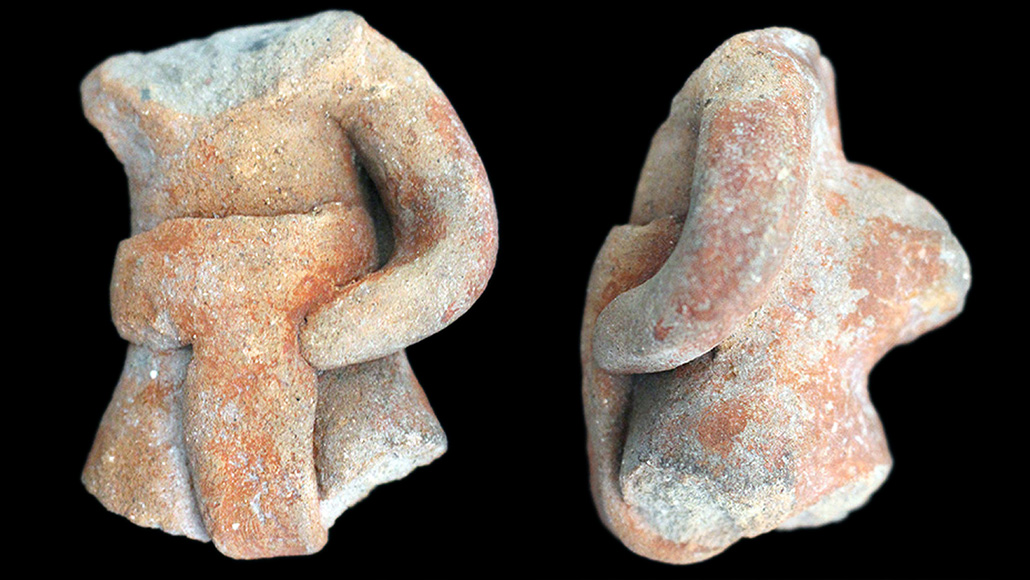An ancient ball court sheds light on a game made famous by the Aztecs
A mountain site in Mexico suggests an ancient ball game didn’t originate in coastal lowlands

Partial ballplayer figurines such as this (shown from the front and side) were unearthed at a mountain site in southern Mexico that also contained a ball court from around 3,400 years ago.
J. Blomster and V. Salazar Chávez/Science Advances 2020